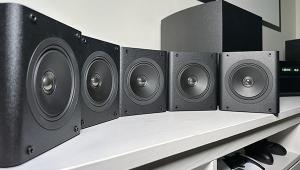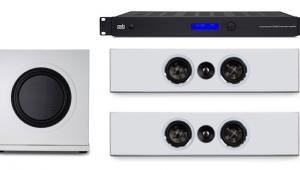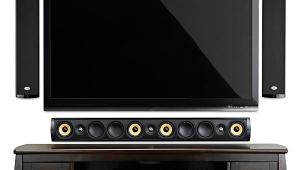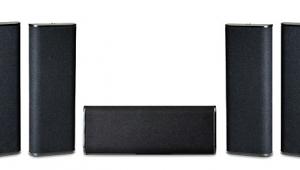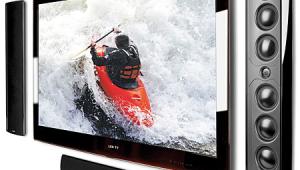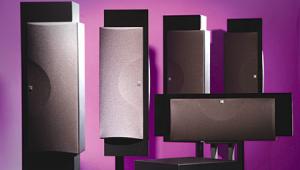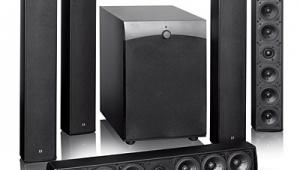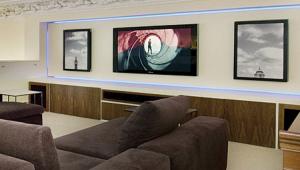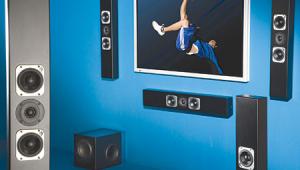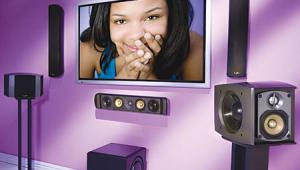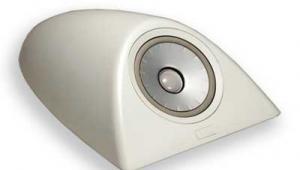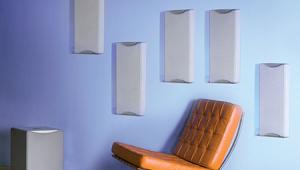these sound systems on here are more than amazing me and my friends all own speakers from here and we are yet to be disappointed from these products. If you want to see something that will not disappoint you go check out this TellCulvers survey and tell me your thoughts.
Opalum Flow.1010 On-Wall Speaker System

I worked at an A/V shop back in the Middle Ages when customers actually drove to a local store and spoke with a salesperson face to face about the gear they were interested in. Every now and then during that golden era, a speaker manufacturer would come along with the “revolutionary” idea of building an amplifier(s) into a speaker. With all the benefits that came with such a design, it seemed like such a no-brainer.
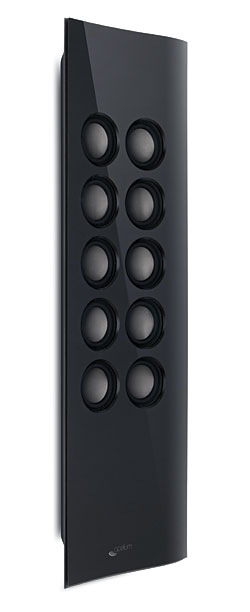 For example, the amplifier topology could be ideally engineered to work with the speaker’s specific drivers, crossover, and enclosure—thus freeing the speaker designer from potentially having to limit the speaker’s performance to keep it from overtaxing some of the crappier (both cheap and expensive) amplifiers on the market. In the best cases, a specially tailored electronic crossover could be used with individual amplifiers driving the tweeter, midrange, and woofer.
For example, the amplifier topology could be ideally engineered to work with the speaker’s specific drivers, crossover, and enclosure—thus freeing the speaker designer from potentially having to limit the speaker’s performance to keep it from overtaxing some of the crappier (both cheap and expensive) amplifiers on the market. In the best cases, a specially tailored electronic crossover could be used with individual amplifiers driving the tweeter, midrange, and woofer.
There were other advantages as well. Placing the amplifiers in the speakers minimized the distance the amplified signal had to be pushed along speaker wires. Moving the high-current amps away from the preamp circuitry helped eliminate electromagnetic interference that might affect the delicate low-level audio signals. Keeping the amps and preamp separated also meant these parts of the audio chain would have their own independent power supplies; and, as a result, the preamp wouldn’t suffer from variations in the output of a common power supply during heavy bass passages. These are many of the same benefits that come from using a separate pre/pro and power amps in a home theater system today.
But in the olden days when equalizers with flashing lights and multi-driver speakers with 15-inch woofers were all the rage, active loudspeakers, despite all their merits, were a tough sell. Not only could you not show off a huge receiver or massive stack of separates to your buddies (or an impressive run of thick, colorful, Anaconda-esque speaker wire slithering across the floor), but you also had to plug each speaker into an AC outlet. And you still had to try to hide the wimpy preamp cable running from your equipment rack to each speaker. For the most part, then, as now, high-performance active loudspeakers were primarily found in the pro-audio world.
A Flowing Stream of Speakers
With the proliferation of thin, on-the-wall, must-match-the-flat-panel speakers, though, the benefits of the active loudspeaker concept have never been more welcome. Thin speakers with minimal cabinet volume and laughably small drivers require lots of acoustic wizardry to make them sound respectable—and it’s absolutely amazing that so many companies have been able to juggle all the trade-offs and design some really excellent-sounding on-wall speakers. Opalum, however, is a relatively new, nonconformist Scandinavian audio company that is forgoing the traditional passive speaker design and totally embracing the active loudspeaker concept, as well as, for the most part, the on-wall form factor.
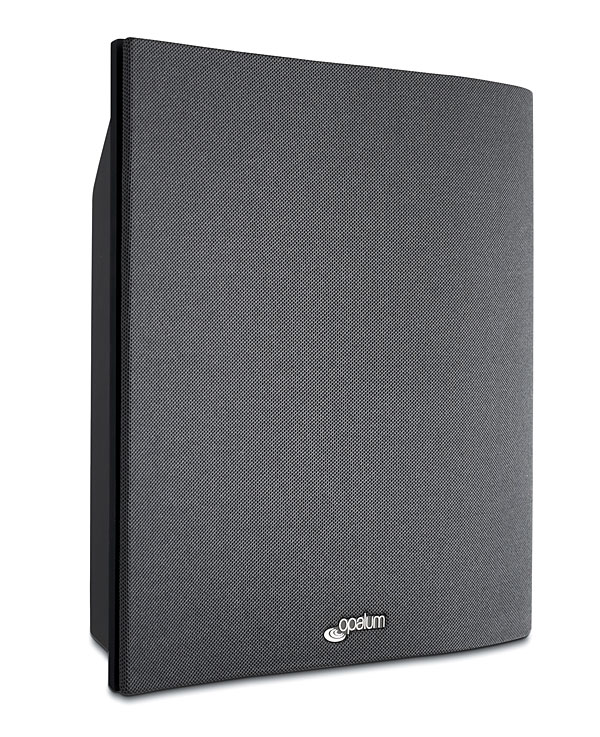
Opalum currently offers four different models of loudspeakers, two of which are on-wall only, while the other two come with removable bases that allow them to be used on a shelf/tabletop or mounted on the wall. For this review, Opalum shipped two pair of the new Flow.1010 on-walls and a pair of the Stream.210 on-wall/shelf speakers. Regard-less of the model, each pair of speakers comes with the same two accessories: a Control Hub and an RF Touch Two-Way Remote Control. The Hub is essentially a mini stereo audio preamp, with two optical and one coaxial digital audio input (all three of which accept uncompressed PCM audio at 44.1 or 48 kilohertz), an analog stereo audio input, and a single analog audio subwoofer output. There are two binding post connectors on the back that look like they’re for connecting a single traditional speaker to the Hub—but don’t make the mistake of accidentally hooking up a “normal” passive speaker to these posts (as I inadvertently did while setting up the system in my theater room). These are no ordinary speaker connectors—in addition to performing audio source switching, the Hub is also a 24-volt power supply for the amplifiers built into the Opalum speakers. (I can’t blame Opalum for my stupidity, either, because the company goes out of its way to warn you to only connect the outputs to Opalum speakers.) Interestingly, since it’s low voltage, you can use up to 200 feet of generic 18-gauge speaker wire to connect the power-supplying Hub to the Opalum speakers; and that means you can safely install the wiring for these speakers in the walls of your house without requiring an electrician or adhering to special electrical code restrictions in most areas (check your local codes as always).
Two Will Get You Four
Wait a minute—only two output terminals for two speakers with two terminals each? That’s right. A cool aspect of the 24-volt power-supply-in-a-box for speakers with the amps inside is that you only need to run a twoconductor cable (the aforementioned 18-gauge speaker wire) from the Hub to the terminals on the speakers; and you can either connect the wires for both speakers together at the Hub’s terminals, or you can daisy-chain the wiring from one speaker to the other. (There have no doubt been a bazillion and one custom installations in which the installers would have killed for this kind of flexibility in wiring configuration.) OK, so much for the power connection. How do the speakers get the audio signal? Are they wireless? Is there some esoteric gimmickry that gets the audio from the Hub to the speakers?
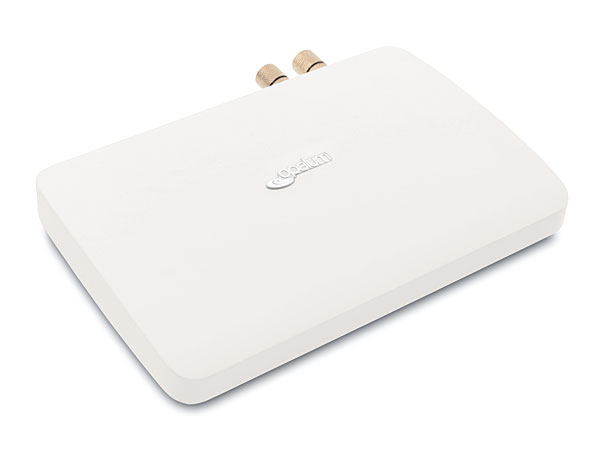
No, the Opalum speakers themselves aren’t wireless—although the remote control and the Hub do include some wireless connectivity. The Hub actually transmits what Opalum says is a bit-perfect digital audio signal along the very same 18-gauge wire that supplies power to the speakers. Opalum calls the proprietary (and patented) technology Actiline. The digital audio signal is encoded for the left and right channels, and the speakers are specifically designated as left and right, so there’s no need for setting dip switches or otherwise identifying which speaker is which. Not only that, the polarity of the speaker wire connections don’t matter, so regardless of which conductor of the wire is connected to which terminal, the Hub/speakers combo figures it all out. If, by chance, the ends of the wires touch or there’s some other short circuit, the Hub will automatically protect itself by shutting down.
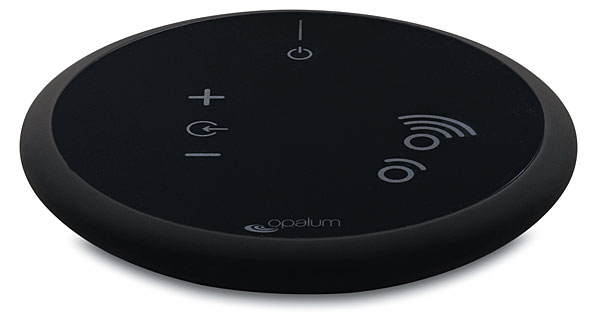
Each Hub comes with a 4-inchround, RF-based wireless remote control that looks like the bottom half of a flying saucer (especially the version in white). There’s a small indentation on the bottom of the remote that keeps it from rolling around when you set it down, and the top is a smooth glass plate with minimal markings at the touch-sensitive areas for volume up/down, source selection, and power. Directly above the power button is a thin, backlit line that indicates power status and denotes the selected source using multiple colors and flash modes. Normally,
I don’t like round remote controls because it’s difficult to tell the front from the back when you’re watching a movie. The current Opalum remote, however, uses RF to communicate with the associated Hub, so it doesn’t matter which direction it’s pointed. Since there are no raised, tactile push buttons on the Opalum remote, though, you still have to look carefully at it to see the very lightly embossed control icons on its polished surface. To conserve battery power, the remote goes to sleep after a period of inactivity and has to be woken up by touching one of the icons on the top surface. Depending on the room lighting, it can be difficult to see where to place your finger.
The speakers, of course, are where the main action is, and there’s plenty to talk about with both the Flow.1010 and the Stream.210 models. The industrial design of the on-wall-only Flow.1010 speakers was supposedly inspired by a sheet of paper floating down a wall. The resulting undulating shape of the front baffle is not only quite attractive, it also aids in minimizing vibrations and manipulating dispersion. Another unusual aspect of the design is that the Flow.1010 does not incorporate a full-length grille over the speaker drivers. All 10 of the tightly spaced 2-inch-round drivers are right there in the open for all to see. (The Stream.210, on the other hand, modestly covers its private parts with either a light or dark gray grille cloth.) It took a day or two to grow on me, but I’ve become quite fond of the flowing design and silvery drivers. If you’re a fan of modern Scandinavian design, you’ll probably feel likewise. If not, you might still find the slightly less dramatic visuals of the Stream.210 appealing.
The ten 2-inch aluminum inverted-dome drivers in the Flow.1010 are configured in a point-source array with one driver functioning as a tweeter and the other nine performing as woofers in groups of three. There are four 20-watt, Class D amplifiers in each Flow.1010—one for the tweeter and one for each woofer trio. Although the company uses different terminology, the electronics in the speaker essentially processes the crap out of the incoming digital signal to compensate for the small cabinet and multiple drivers before feeding it to the internal amps. (Actisonic is Opalum’s name for the core processing technology used in the speakers. It’s “based on advanced inverse-filtering algorithms optimizing both frequency and time domain characteristics.”) The Stream.210 includes a 5-inch woofer and a 1-inch silk-dome tweeter. Instead of being quad-amped like the Flow.1010, the Stream.210 is biamped with a 20-watt amp for the tweeter and a 40-watt amp for the woofer; and, unlike the bigger model, the Stream.210 ships with an attached base for use on a shelf or tabletop. The base can be easily removed, however, and the speakers can be mounted on the wall using the two keyhole mounting slots on the back of the speaker. The Flow.1010 also has two keyhole slots on the back, but they’re not spaced equidistant from the center—and the alignment on the left speaker is a mirror image of that on the right one. Because the back surface of the Flow.1010’s cabinet is smaller than the front baffle, it’s difficult to figure out the precise spots on the wall to install the mounting screws. Opalum should definitely include mounting templates with all its speakers, especially the ones, like the Flow.1010, that are specifically designed to mount on the wall. And they say they will, starting this fall.
High on Music
A pair of active speakers (on-wall or bookshelf), a mini-preamp Hub, and a discus-shaped remote control doesn’t seem like the makings of a home theater. It sounds more like a setup for a two-channel desktop audio system or perhaps a bedroom music system. Indeed, when the gear first arrived, I immediately hung a pair of the Flow.1010 speakers on the wall in my office and connected the Hub to my laptop’s audio output. (Here’s an interesting side note: As big as the Flow.1010 speakers are—21.3 x 6.7 x 1.7 inches—I used a pair of 3M’s Command Damage-Free picture-hanging strips to attach each 4.48-pound speaker to the wall in front of my desk. Although it certainly wasn’t sanctioned by Opalum or 3M, it worked perfectly. Renters and tool-phobic people take note! Depending on the speakers, you, too, can enjoy on-the-wall goodness without making holes in the wall.) It was readily apparent from the first few notes that the Flow.1010 was more than just a Scandinavian design statement. This is a true high-performance speaker system with tightly defined imaging and a seductive, silky-smooth top end. On Larry Garner’s “Blues Pay My Way” (Baton Rouge), for instance, the strings of the electric guitars were snappy and clean. The vocals were strong and centered, and the individual nuances of Garner’s and Larry McCoy’s voices—along with their respective guitars—were clearly delineated.
Configuring three Flow.1010s (for front left, center, and right channels) and a pair of Stream.210s (for surrounds) as part of my theater system proved a bit more involved than slapping them on the wall and firing up the BD player. To begin with, the Flow.1010 and Stream.210 are sold in pairs with each included Hub designed for two-channel playback. As a result, I had three Hubs to deal with (plus each one’s hefty power supply), along with three remote controls and three independent volume controls.
- Log in or register to post comments

